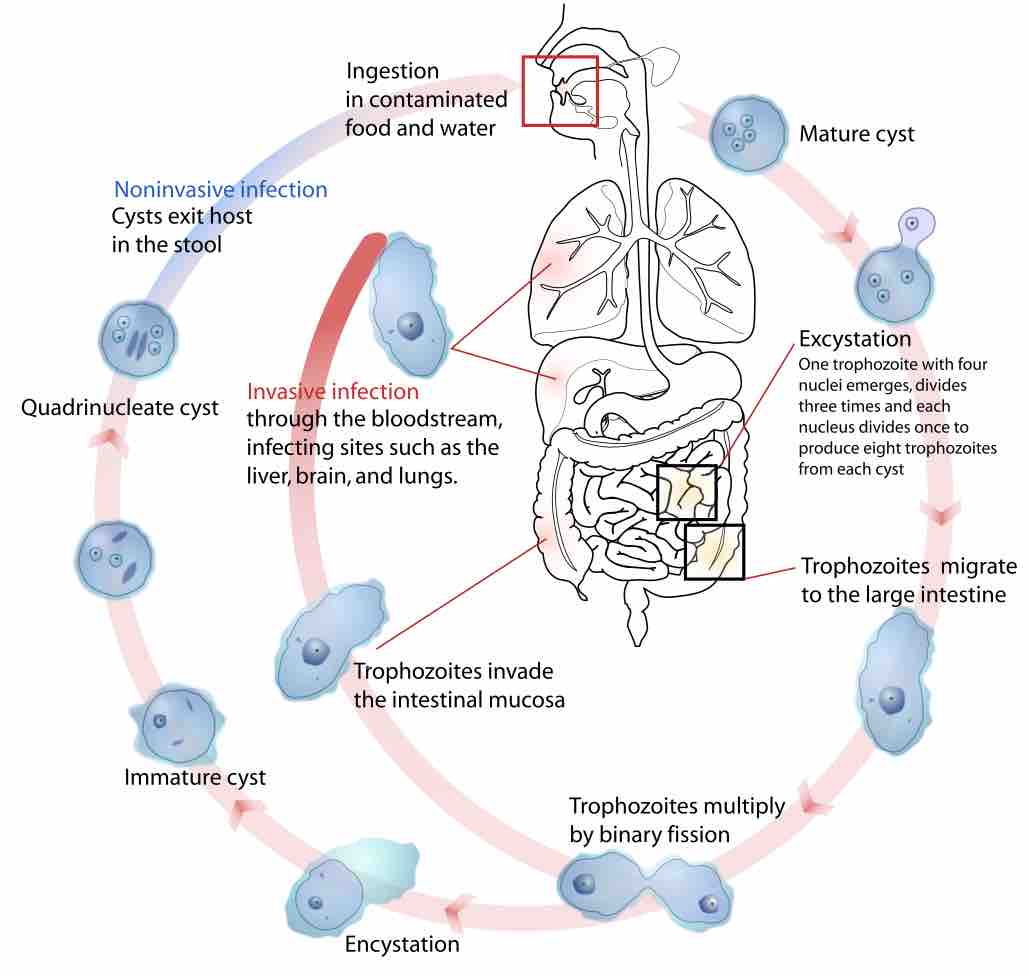Amoebic dysentery, also referred to as amoebiasis, is caused by the ameoba Entamoeba histolytica. Dysentery is characterized as an inflammatory disorder of the intestine that results in severe diarrhea containing both mucus and blood in the feces, often accompanied with fever and abdominal pain.
The route of transmission for ameobic dysentery is the fecal-oral route. Transmission and infection occur upon exposure or ingestion of contaminated food and water. The infective cysts are passed via infected stool. The ameoba also demonstrates the ability to spread as free amoebae or trophozoites, meaning the cysts are not absolutely necessary; however, these states do not survive long outside of the host.
Ameobic dysentery is seen in both developing and industrialized countries, although it is most common in tropical areas. Ameobic cysts are often found in areas of the world where the use of human feces for fertilizer is common, often referred to as 'night soil'. Upon ingestion of contaminated foods or water, the cysts will move into the intestinal area. These cysts are protected from stomach acids and are able to evade destruction. Once in the intestine, the cyst breaks open and releases the amoebas which then burrow into and damage the intestinal walls.
The amoebae or trophozoites are able to divide via binary fission and and produce cysts. If they are passed in the feces as is, instead of developing into cysts, their survival rate decreases as they are unable to survive in harsh environments . Interestingly, individuals can be asymptomatic if infected with trophozoites and can function as carriers by passing cysts in their stool.

Life Cycle of Entamoeba histolytica
An overview of the life cycle of E. histolytica, the source of amoebic dysentery.
Symptoms of individuals infected with Entamoeba histolytica include ulcers, abdominal cramps, diarrhea, bloody stools, liquid stools, fever and vomiting.